Dominican sweets & much more!
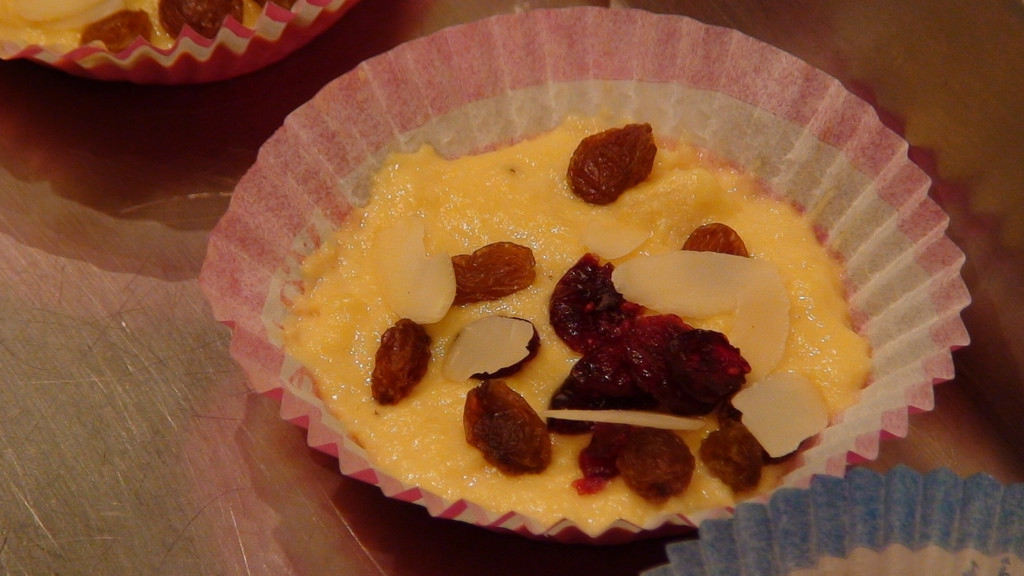
Ana María, Alejandro's Mum, has been an excellent host. She knows that I am writing blog posts about my trip to the Dominican Republic, so she has started to introduce me a little more to the culture and typical foods that they have here. You could say that I have learnt about new flavours and new cooking techniques due to the fact that, before I came here, I had never tried anything like the traditional, daily home-cooked food that they eat in the houses in Santo Domingo.
Ana María had to go to Santiago de los Caballeros, known as Santiago. Apart from Santo Domingo, the capital of the Dominican Republic, Santiago is one of the other major cities: it is a city belonging to the province of Santiago in the region of Cibao. It can be found more or less a couple of hours away from Santo Domingo seeing as many stops are made along the way to buy typical food and sweets. Even though you can buy them in the capital, they are sweeter and fresher in Santiago de los Caballeros, and so that is why Ana María wanted to take advantage of the opportunity of going there so that she can bring some for me to try.
The best way to introduce Dominican cakes: Miguelina shops
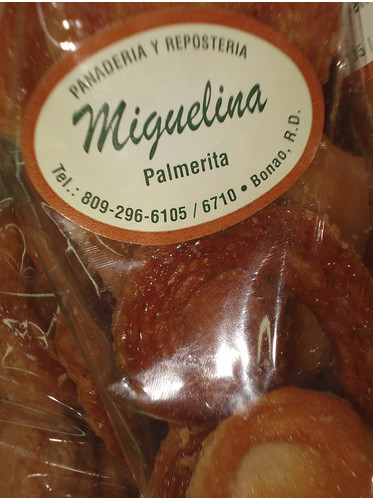
These cakes were delicious! If you want to buy any, make sure you find a shop called Miguelina. It is a chain of shops founded in 1982 by Miguelina Mirabal and Félix García - their products are 100% Dominican and they sell cakes that are very traditional and that are really popular in the Dominican Republic.
On this occasion, I will focus more on Dominican cakes. I have to say, many of these are similar to those which we make in Mexico, and many of the ones we made in Mexico exist in other countries in Latin America as well. I think that basically it is just the name that changes, but the taste of all of them are mostly similar - this makes me happy as I remember that in the end, we are not all that different to each other.
Jalao de coco - honey and coconut sweet
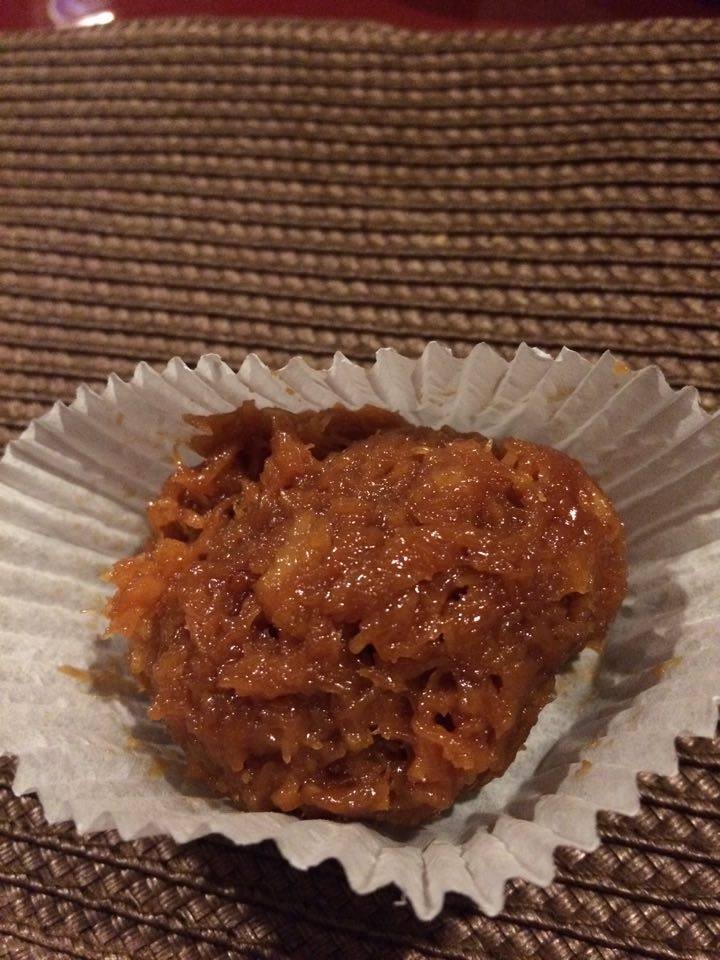
In Miguelina, this cake is made with treacle instead of honey. I think I liked the taste of honey more, for some it can be too sweet - I could only eat half of one.
I had not tried this cake in my country before, and there is nothing like it around there. I don't know if we really don't have it in Mexico or just if I have missed it and need to travel more around my own country to find it.
In Santo Domingo there is coconut in everything, throughout the streets you can find men selling coconut water from their carts - it is logical that they should take advantage of this tasty fruit to make a delicious dessert like "el jalao de coco". There are many Latin American dishes that fight for ownership over this sweet, but there is no doubt that the honey and coconut is a Dominican delicacy.
Who could've imagined that this sweet has both ginger and treacle in it? The treacle can be tasted quite easily, but the ginger is characteristic for its strong taste... This sweet is the favourite of many children here, and how could it not be when it is one of the sweetest!
How to make them at home
Although it is a Dominican sweet, it is quite simple and quick to make. I think that in almost any part of the world you can be sure to find treacle and coconut, which are the main two ingredients. First, you need to grease a baking tray with oil. Separately, mix honey or treacle with two cups of shredded coconut and cook it over a medium heat. When it starts to boil, stir it until the treacle/honey becomes a dark colour and a thick consistency. Then, put that on the baking tray and leave it to cool at room temperature.
Here comes the fun part... Start to make the cool mixture into little balls with your hands, approximately four centimetres across. If you want to add a bit of artistic touch, you can roll the mixture into balls with some more shredded coconut on the outside of it. When you are finished, you can eat it and then save some in the fridge to keep the consistency of the balls.
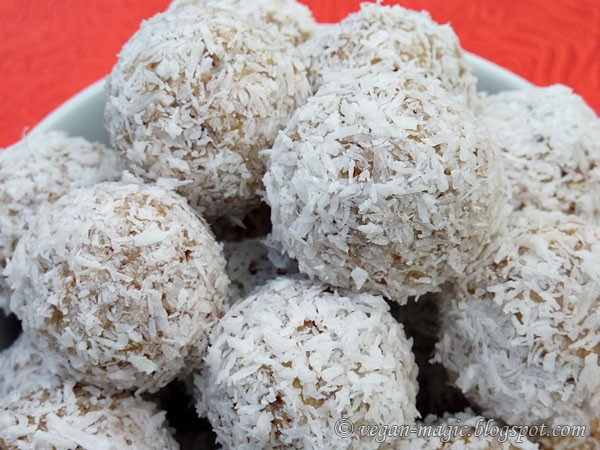
How much do they cost?
In Miguelina, a pack of five fresh "jalaos de coco" will cost you around $100 Dominican pesos, which is around $2 USD and £1. 50.
Dulce de leche - caramel sweet
I like coconut, but it's not my favourite in comparison to other sweets, so it was logical that this sweet was my favourite of all of them! This one has various names: "dulce de leche", "pasta de leche" or "dulce de leche en pasta". This sweet is simply addictive! Its weird, because out of all of the sweetest of sweets that I have tried here, this is probably the most simple, it is only made out of sugar, milk, honey and vanilla.
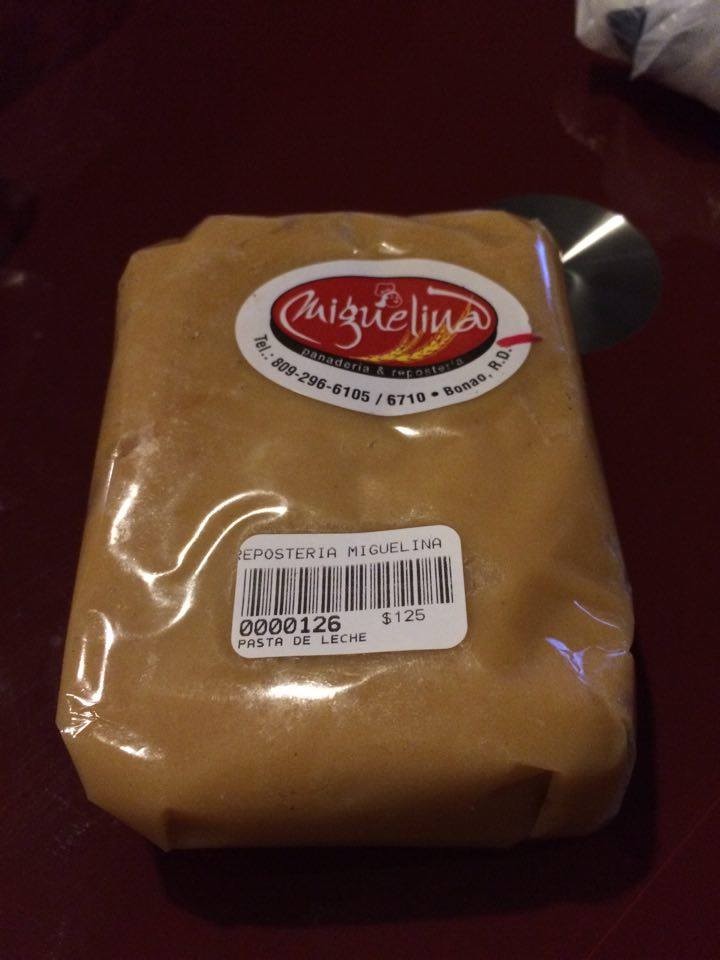
My favourite: in Mexico we also have something that has the same name but they are on drumsticks and they are brown or covered in almonds. The presentation and texture is the only thing that is different: here they are thicker.
How to make them at home
This sweet you can make yourself at home very easily no matter what country you are in, the ingredients are easy and really common to find.
Put a little bit of milk in a saucepan with sugar and salt and cook at a high heat. You will need to wait a little until the consistency is a little thicker, then you can turn the heat down to low. Keep stirring the whole time. When it becomes transparent, so much so that you can see the bottom of the saucepan, turn off the heat and add a spoonful of cornflour dissolved in three spoonfuls of vanilla. Keep stirring it constantly and place the pan back onto the heat at a high temperature for ten minutes. Finally, turn off the heat and stir it until you have a thick consistency.
How much do they cost?
In Miguelina, you will be able to find "pasta de leche", they will sell it at around $125 Dominican pesos, which is about $2. 70 USD and about £2.
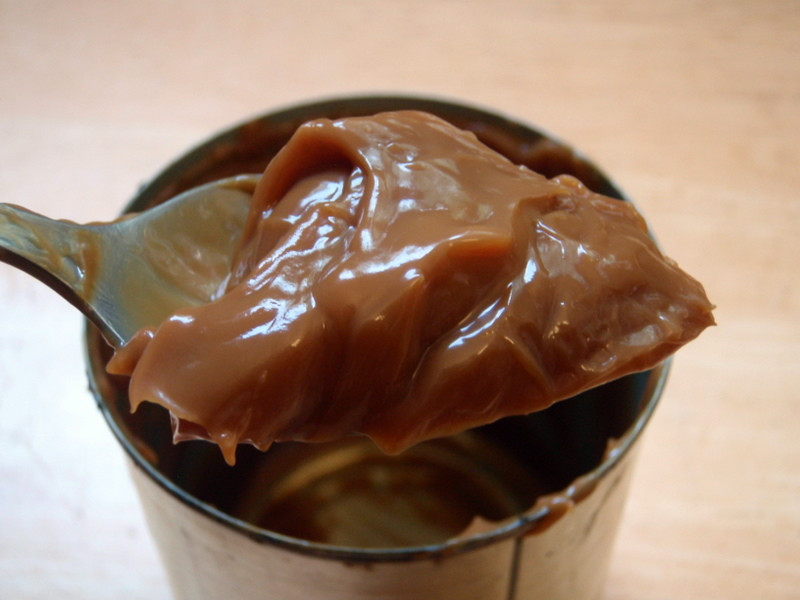
Palitos de coco - coconut stick
These aren't bad, but they aren't as good as I had hoped. It was difficult to find them on the internet because there is another type of coconut sticks that are more famous than these; they are red sticks with white inside them. The ones that I tried were about 5cm long and 1cm wide. Sadly, I haven't found a recipe for making these ones, but I imagine that it isn't rocket science... it is probably just shredded coconut and a saucepan of sugar until it caramelises, so then you can make it into a stick form.

How much do they cost?
If you would like to buy them in Miguelina, you will find four and they will cost you about $120 Dominican pesos, which is about $2. 60 USD and about £2.
Palmeritas de hojaldre - palm pastries
I was glad to see this pastry because we also have it in my country as well and the taste was basically the same. In Mexico they are called "orejitas" - little ears, because of the way they look which is similar to an ear. I don't think that these count as 100% Dominican as I think they have an Arabic origen.
Without a doubt, they are delicious to try, they are layers of pastry on top of one another and you can eat them with butter or oil. They are quite crunchy and salty. You can make them sweeter if you add a sugar glaze on them, some places add creme cheese or ricotta cheese. They are popular as snacks, you can eat them for lunch or you can put them in the middle of the table for guests.
Hoe much do they cost?
In Miguelina, a bag of them will cost you about $200 Dominican pesos, which is about $4. 30 USD and about £3. 50.
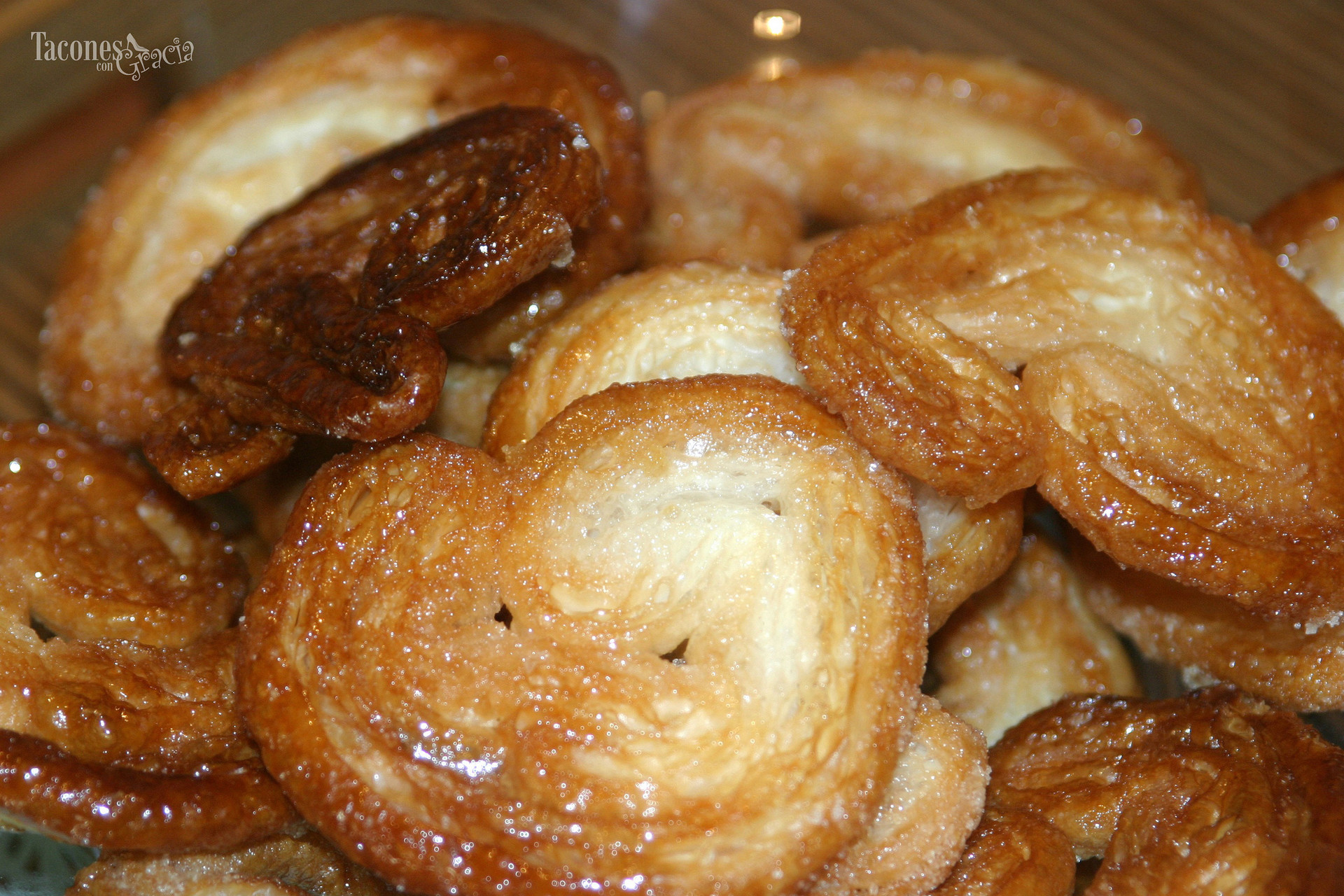
Queso de hoja - sheet cheese
I quite like this cheese and it makes me happy to have it as food because it is similar to a cheese we have in Mexico called "queso Oaxaca". They both have a similar taste and texture, the texture is quite unique as you can have the cheese in little strings and it is really fresh. In Mexico we use it to make quesadillas, and here they use it on small salty biscuits.
Although this cheese is quite famous, you can't necessarily find it everywhere because its sale and distribution is handmade. Many consider it to be a type of creole cheese, which is indispensable within Dominican gastronomy.
The taste, texture and quality of this cottage cheese depends on the area of the country you are in, they say that in the east it is saltier and harder. The main flavor would be the milk and even the type of grass that they feed the beef. There are varieties of this cheese such as "el hijo", "de cáscara roja" and "el común".
We wanted to put it on the biscuits that we bought and it was so nice. The recipe is quite a bit too elaborate to put here, as you need a curling agent and the process is not simple.
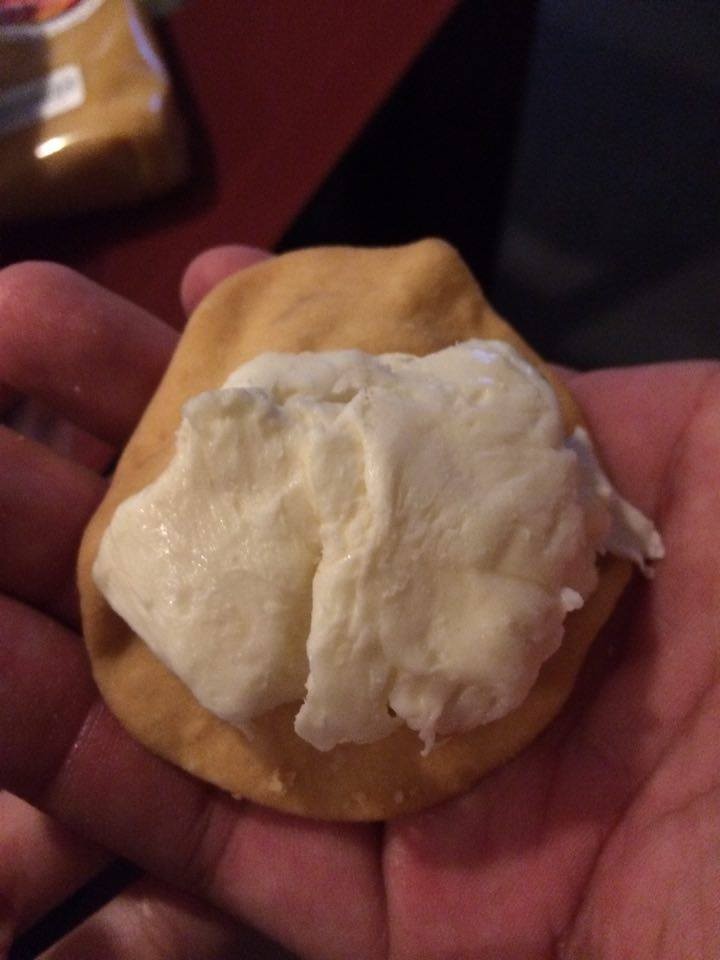
(Queso de hoja on a biscuit)

(Salted biscuit)
How much is it?
In Miguelina, you will be able to find it at around $135 Dominican pesos, which is about $2. 90 USD and about £2. 20. It comes in a pack with about eight small cheeses, each one with a diametre of 4cm more or less. The back of handmade biscuits to accompany the cheese can be bought in Miguelina as well, they are called "galletas especiales" and the bag will cost you $80 Dominican pesos, which is about $1. 70 USD and about £1.
Don't wait to taste this sweet treats when you come to the Dominican Republic! And if you aren't coming, try to make them wherever you are!
Photo gallery
Content available in other languages
- Español: ¡Dulces dominicanos y mucho más!
- Italiano: Dolci dominicani e molto altro!
Want to have your own Erasmus blog?
If you are experiencing living abroad, you're an avid traveller or want to promote the city where you live... create your own blog and share your adventures!
I want to create my Erasmus blog! →













Comments (0 comments)